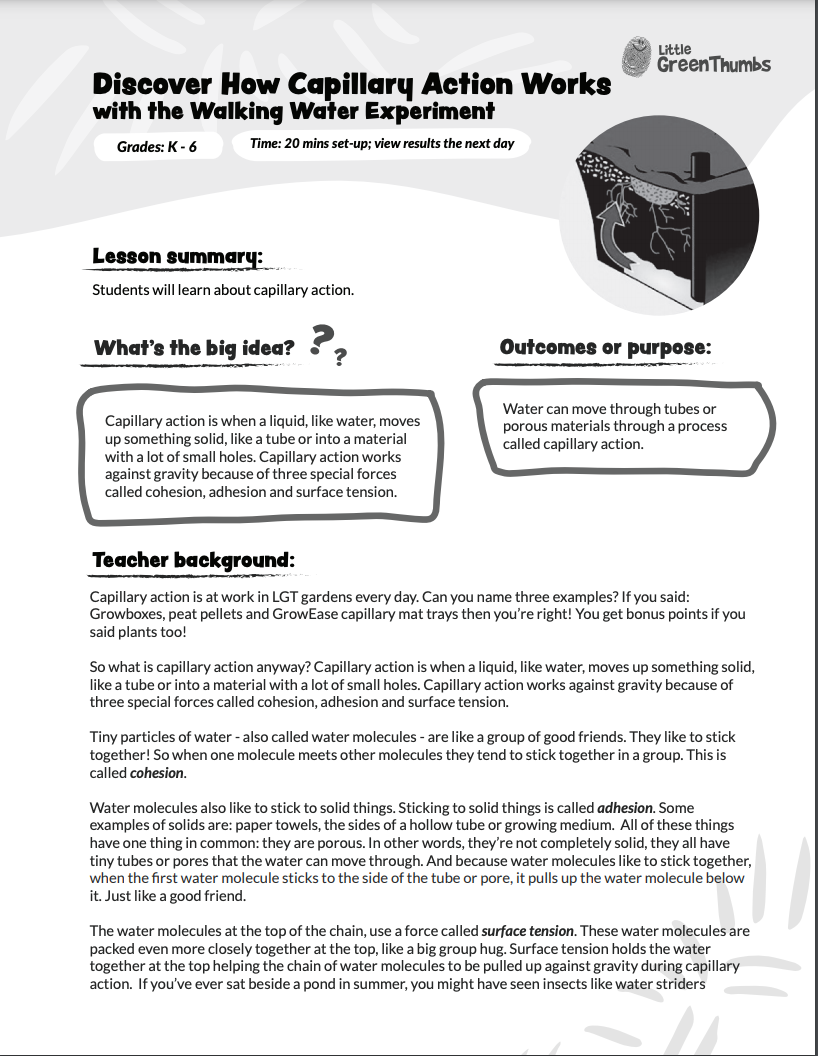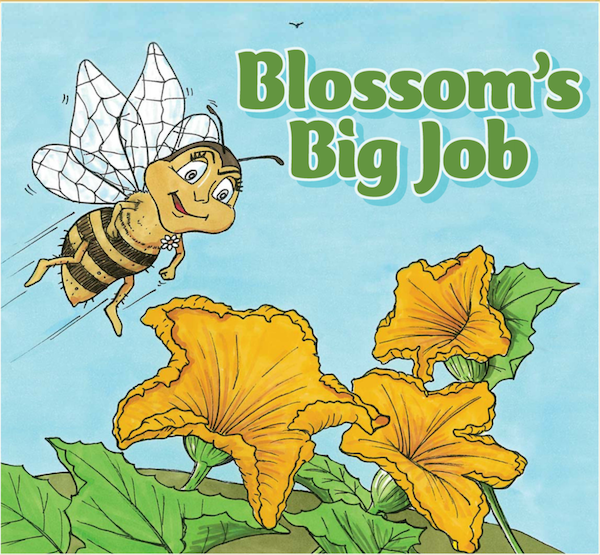Experiment:Discover How Capillary Action Works with the Walking Water Experiment
Grades: K – 6
Students will learn about capillary action.
Set up: 20 mins set-up; view results the next day
Capillary action is at work in LGT gardens every day. Can you name three examples? If you said: Growboxes, peat pellets and GrowEase capillary mat trays then you’re right! You get bonus points if you said plants too!
So what is capillary action anyway? Capillary action is when a liquid, like water, moves up something solid, like a tube or into a material with a lot of small holes. Capillary action works against gravity because of three special forces called cohesion, adhesion and surface tension.
Tiny particles of water – also called water molecules – are like a group of good friends. They like to stick together! So when one molecule meets other molecules they tend to stick together in a group. This is called cohesion.
Water molecules also like to stick to solid things. Sticking to solid things is called adhesion. Some examples of solids are: paper towels, the sides of a hollow tube or growing medium. All of these things have one thing in common: they are porous. In other words, they’re not completely solid, they all have tiny tubes or pores that the water can move through. And because water molecules like to stick together, when the first water molecule sticks to the side of the tube or pore, it pulls up the water molecule below it. Just like a good friend.
The water molecules at the top of the chain, use a force called surface tension. These water molecules are packed even more closely together at the top, like a big group hug. Surface tension holds the water together at the top helping the chain of water molecules to be pulled up against gravity during capillary action. If you’ve ever sat beside a pond in summer, you might have seen insects like water striders perched on top of the water in the pond. The reason they don’t sink is because the surface tension at the very top of the water acts like a film, keeping the water striders from sinking.
Plants couldn’t survive without capillary action. Capillary action pulls water into the soil. Plants grow roots into the moist soil and roots absorb water into the plant. Water starts climbing up through the plant through tiny tubes in the stems and leaves. But capillary action can only pull water up a short distance, after which it cannot overcome gravity. To get water up to all the stems and leaves, the forces of adhesion, cohesion go to work inside the plant to move water up to the furthest leaf.
Materials:
- 5 Clear glasses
- 4 Pieces of paper towel (half sheets work well)1 clear glass or plastic cup
- Water
- Food colouring in primary colours (red, blue, yellow)


